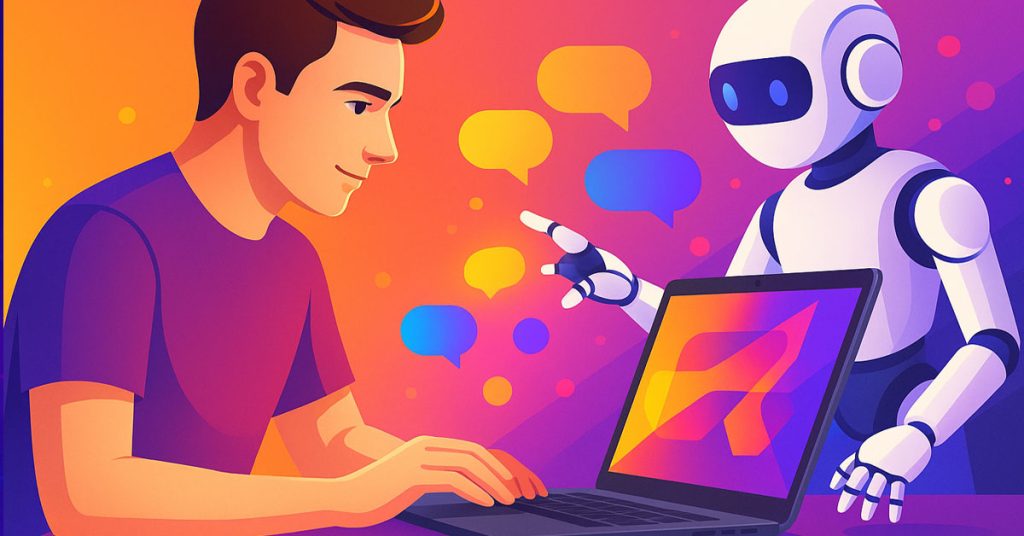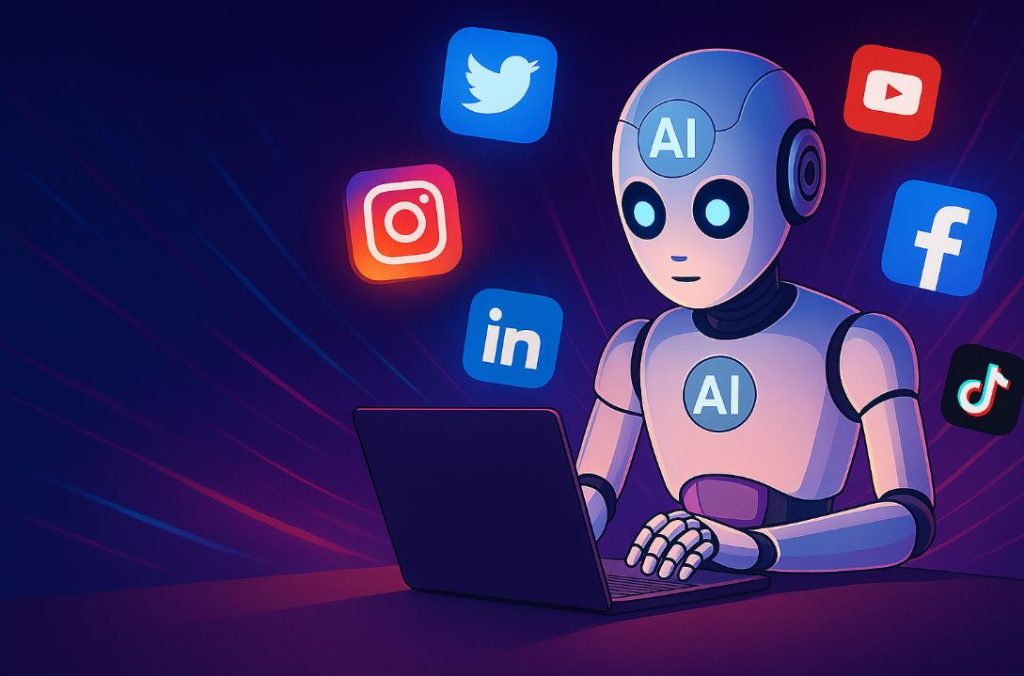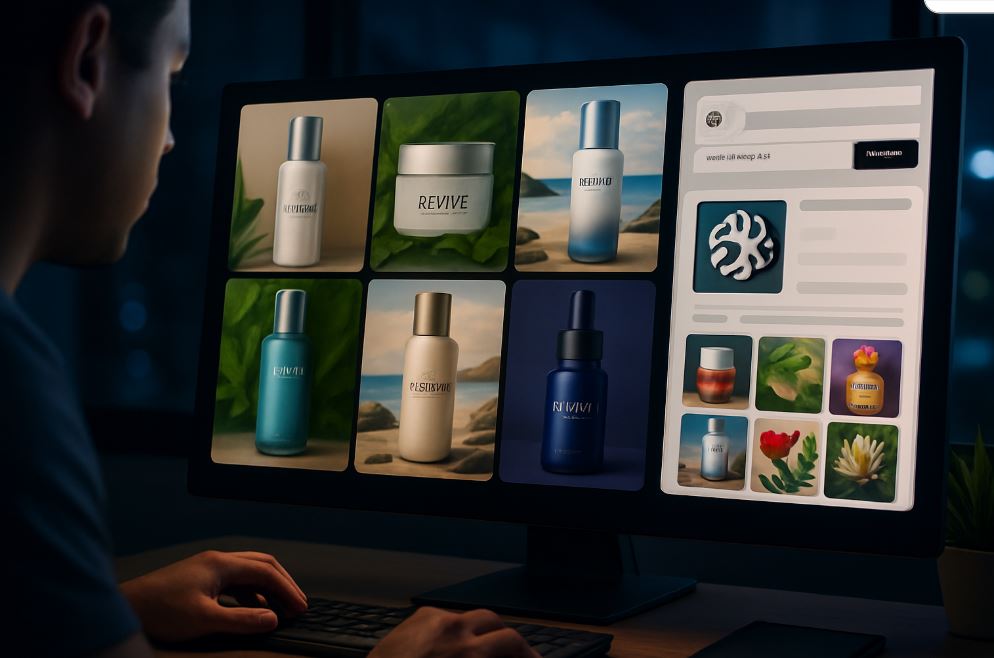In 2025, the landscape of visual creation is evolving faster than ever. As a designer with over two decades of experience, I’ve seen the transformation , from the days of precise, laboriously designed visuals to today’s frantic rate of content production.
We don’t produce a handful of well-crafted items a month anymore. Brands now demand hourly, even daily, visual content on hundreds of platforms: Instagram, TikTok, YouTube, LinkedIn, newsletters, blogs, and others.
This demand explosion has placed a huge burden on creatives. Deadlines are tighter. The quantities are daunting. Even the most passionate creatives feel the squeeze.
I remember vividly how, a few years back, back-to-back projects had me creatively drained, pushing pixels late into the evening without the luxury of taking a step back and looking at the big picture.
Yet there’s a change underway , a more intelligent, quicker means of making without a loss of quality. AI design tools have arrived not to take our place, but to enhance us. They provide speed, agility, and an amazing degree of consistency, enabling us to return to what’s most important: ideas, story, and creativity.
In this tutorial, I’ll walk you through why visual creation is ripe for disruption in 2025, what AI design tools are (and how they actually work), and how to build a smart, day-to-day workflow with them. As we go, I’ll also provide my own tips, gotchas to look out for, and real-world examples of how AI is helping agencies and freelancers thrive.
Let’s get started.
Why visual creation needs an upgrade in 2025
Design expectations are higher than ever
Content is no longer king , it’s the whole kingdom.
Every brand, every maker, every businessperson is competing for eyeballs in a cluttered online environment. And eyeballs are visual first these days. Before anyone reads your caption or hears your pitch, they look at your graphic.
The numbers prove this point. Articles with a photo invoke far more activity on each of the major sites. Images are no longer optional; they are a requirement.
But here is the problem: the platforms have proliferated.
Previously, a designer would create assets for a website and perhaps a Facebook post. Now? We require various formats for Instagram carousels, TikTok videos, YouTube thumbnails, LinkedIn banners, Pinterest pins, and even small email graphics.
Every platform has its own optimum sizes, styles, tones , and followers anticipate custom-made graphics, not lazy cross-posts.
In short: the design field has become a high-speed production studio. Creativity remains crucial, but speed and volume have become survival skills alongside it.
The old way: hand-cranked, time-consuming, inconsistent
When I think of my early years as a designer, it used to be slower and more laborious. We would take days to perfect a logo, a brochure, a website banner.
Flash forward to today , those same hours are now often condensed into a morning sprint.
Traditional workflows , manual asset sourcing, building layouts from the ground up, endless resizing and fiddling , are just too slow for today’s demands.
Speed pressure leads to inconsistency. I’ve seen it myself: colors that are inconsistent from post to post, off-brand typography sneaking in, layouts that look rushed rather than designed.
Burnout isn’t just a risk , it’s almost guaranteed if you try to meet today’s pace manually.
That’s where AI provides not only a productivity gain but a genuine lifeline. Not to remove the soul of our work, but to eliminate the monotonous heavy lifting that drains our time and energy.
What are AI design tools (and how they work)
Quick introduction to generative AI for design
In essence, AI art programs use generative models , intelligent algorithms trained on millions of examples , to generate images from simple prompts you give them.
Imagine typing:
“A city skyline in the future, at sunset, in watercolor”
and receiving stunning, one-of-a-kind shots ready to use or retouch , in less than a minute.
That is the heart of generative AI: converting ideas to images at lightning speed.
Some of the best tools available today include:
-
Adobe Firefly: Integrated with Creative Cloud, ideal for graphic designers, illustrators, and photographers.
-
Midjourney: Best for highly artistic, stylized, and surreal visuals.
-
DALL-E: Perfect for conceptual images and realistic renders.
-
Sora: Next-generation tool focused on video creation.
-
Ideogram: Specializes in merging typography with visual designs.
-
RunwayML: Focuses on AI-powered video editing and content generation.
These tools not only enable faster creation but expand creative possibilities dramatically.
Advantages: velocity, scale, brand consistency
Speed
AI drastically reduces the time between idea and output. Tasks that took two hours now take fifteen minutes , and this happens daily in my workflow.
Scale
Need dozens of variations? AI empowers you to create at scale without creating extra stress.
Brand Consistency
Initially, I worried AI would introduce too much randomness. But with smart setups , brand kits, templates, style guides , AI can actually enhance consistency.
You generate content that remains fully aligned with brand standards, colors, typography, and tone.
3-step process to design smarter using AI tools
Step 1: design a social visual in 15 minutes
Pick a simple project to begin with , a social media post, a newsletter headline, a promo graphic.
Give a clear prompt that describes what you need: “Simple drawing of a coffee cup on a table, warm colors, morning sun.”
Insert that into an AI program such as Canva AI, Microsoft Designer, or Firefly. Choose from among the choices, edit the best one, adjust text and layout as required , and you’re finished.
First couple of times, it can take 20 minutes. After a few tries, you’ll actually be creating polished visuals in 10 to 15 minutes.
Step 2: create a daily schedule with prompts & templates
After the realization of how potent AI is, the second step is the creation of a system.
-
Make a folder of your preferred prompts: quotes, promotions, product launches, event banners.
-
Create 3–5 flexible templates in Canva, Figma, or Photoshop.
-
Every morning or start of the week, batch-create your main visuals.
This transforms content creation into a smooth daily habit rather than a stressful sprint.
Step 3: leverage time-saving functionality in tools
AI software is full of smart features that trim minutes (or hours) from your workflow for example:
-
Auto-layouts in Figma adjust designs dynamically.
-
Generative Fill in Photoshop expands backgrounds, eliminates objects.
-
Magic Resize in Canva adapts your visuals instantly to different platforms.
Master these automations to maximize efficiency and reinvest saved time into creative thinking.
Pro tips to enhance your visual productivity
Utilize prompt libraries
Rather than retyping prompts daily, maintain a personal prompt library. Save and refine prompts that work best for you.
Prompt libraries turn AI into a reliable production tool.
Design reusable templates
Templates are your best friends:
-
Create once
-
Reuse endlessly
-
Update backgrounds, swap images, tweak text without starting from scratch.
Templates ensure speed and brand consistency at scale.
Automate distribution with Zapier/Buffer
Creating fast is great , but distributing efficiently is critical.
Use Buffer or Zapier to schedule your AI-generated content across multiple platforms.
This frees your time and ensures consistent posting.
Save styles in brand kits
Store your brand fonts, colors, logos in Brand Kits inside design tools.
Brand Kits streamline your workflow and guarantee brand consistency with every new piece.
Common errors to evade with AI design tools
Using generic prompts
Generic inputs produce generic outputs.
Be specific: define subjects, styles, moods, colors, lighting.
The more details you give, the better and faster your results.
Depending 100% on automation
AI is strong, but human judgment is irreplaceable.
Always review AI outputs carefully, refine details, and apply creative direction.
Ignoring brand consistency
Don’t let the endless creativity of AI distract you.
Consistency in style, color, and tone builds trust and recognition.
Case studies: real-world examples of faster design with AI
How agencies reduce design time by 50%
An agency I worked with halved their design timelines by using AI for rough drafts and concept visuals.
Designers then spent their energy perfecting rather than starting from zero.
How freelancers scale content for multiple clients
A freelancer managing five brands’ social media doubled her output thanks to AI batch-generation.
She now handles more clients without working nights or sacrificing quality.
The future of visual design isn’t a choice between human creativity and AI speed. It’s about combining them smartly.
By embracing AI design tools today, you can: create stunning visuals 10x faster, maintain brand quality, rediscover the joy of creativity
I’ve seen it reshape my career , giving me back my creative time, my focus, and my passion.
Now it’s your turn.
Start today. Create smarter. And step confidently into the future of design.
Every creative has their own take on this shift. If something here resonated or challenged your thinking, feel free to share your perspective in a comment below.



